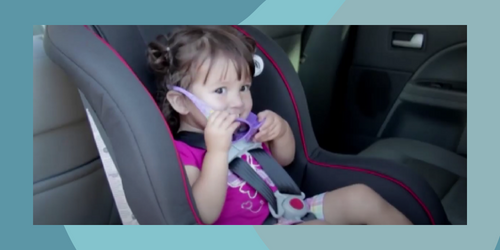Rear Facing Car Seat: The perfect one for your little one’s safe travel
Baby to kids, all loves so much outing with their parents. As a parent, it is your first priority to ensure your child’s safety while your child is on a trip. Because thousands of children are badly injured and even died in car crashes. But proper use of rear facing car safety seats will save you and your child from hazardous situations.
That’s why we are here to know details about rear facing safety car seats.
What is rear facing car seat?
Rear-facing car seats are also known as safety seats. These car seats are installed for sitting on the back seat of the car, where the babies are kept facing the back of the car.
This is the safest system for your newborn to 7 years old kids to ride in the car. Depending on their age, weight, and height, whichever is appropriate for a rear-facing car seat, booster seat, or main seat, parents and caregivers should ensure to fully fasten seat belts by child safety rules before starting their trip.
Why do babies need to use rear facing car seats?

During a car accident, the backward-facing car seats provide the best protection for your child. If a young child is moved facing forward, their body cannot handle these types of forces which can result in serious injury, paralysis, or death. In the rear-facing seat, the crash forces are absorbed by the shell of the back-facing car seat instead of the child’s body.
The backward-facing seat helps like cowrie shells and protects the infant’s soft head, neck, and spine. Hence, keep your child rear-facing and better protect it. So, you should target to use this system to seat your child as long as the maximum limit is exceeded.
Who are the appropriate ones for the rear facing car seat?
The American Academy of Pediatrics (AAP) states that rear-facing seats are recommended for children ages 2 to 2.5 years, whose weights are less than 30 lbs. Children who are 30 to 40 pounds and ages 2.5 to4 years are suggested to use the convertible car seat. With a lap and shoulder belt, you can use a harness booster seat as rear facing seat for a 5 to 7 years old child who has weighed between 40 to 60 lbs. Basically, all these depend on the capacity of the highest height and weight resistance as long as it is allowed by manufacturers.
How many types of rear-facing car seats?
Ok, dear! Let’s move on to know how many rear facing car seats there can be and how long you use rear-facing car seats.
Generally, rear-facing and convertible seats can be used for children from 22 to 50 pounds depending on the seat. But many infants will outgrow it. So, the length limits of a rear-facing only seat should be well-checked before they check the weight limits. So, be sure to check both when you set up a rear-facing. As per the child’s height, weight, and age limits of their car seat three types of rear-facing car seats are available in the market. These are the following-
- Rear-facing only car seat
- Convertible car seat, and
- All in One / 3-in-1 car seat
01. Rear facing only:
Depending on the manufacturer’s model, this type of chair facing backward seat is used for a baby’s weight up to 22 to 35 lbs. Pressing these car seats can lock and unlock separately from the car seat base. You’ll hear a click when the seat is set up or taken out from the base. That’s why no need to install the car seat separately. You only need to set up the base perfectly on the car’s back seat. It is compact in size and has a carrying handle. One can use this seat for their newborn in the stroller too.
02. Convertible car seat:
Convertible car seats are 2nd steps of the rear facing car seats. It is more significant and more extensive in both size and weight than rear-facing only car seats.

Features, pros, and cons
- You can use a convertible car seat both ways rear-facing and forward-facing. Rear-facing car seat weight limits are up to 5 to 45 lbs. approximately.
- when the baby outgrows and crosses the limit of either the height or weight of the rear-facing seat you can turn over it to forward-facing.
- It doesn’t have a separate base or carrying handle. It is a nonportable car seat.
- After installation, you can leave it in the car.
- It has a 5-point harness that is attached and can help to carry children for traveling.
03. All in One:
Basically, some High-back Booster car seats can be used as rear-facing car seats. This type of car seat is also known as a three-in-one car seat.
Features, pros, and cons of ‘All in one ‘
- Age and weight limit: Those babies who are bigger and outgrow in size and weight are the appropriate ones for this all-in-one back-facing car seat.
- It does not have any base or handles to carry. It is ideal for toddlers and bigger babies.
- If the rear-facing and convertible car seats are not suitable for your baby, then you can try this all-in-one baby seat.
- You should follow the user module of the manufacturers.
To know how to install it in your car by seat belt please read the following article – How To Set Up Rear Facing Car Seat.
In addition, you can see all these types car seats in amazon.com
Final words…
The outing is always an enjoyable moment for our children. That’s why when we travel with them in the car, we enjoy their company too. Besides this, we should be aware of their comfort and safety. Only a rear-facing car seat gives us physical and mental satisfaction and a strain-free joy-full tour with our baby.

